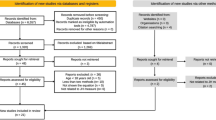Abstract
Humanoid robots have recently been the subject of many new and interesting fields both in robotics research and industry. The wide variety of their applications in civic and hostile environments demand developing approperiate theoretical models for analysis. A dynamical model was developed to study the human jumping process, and the effect of factors like joint speeds and hand motion in jumping. An experiment was designed and setup to compare the theoretical model with experimental observations. Time histories of vertical force, mass center velocity and driving torques were also obtained. Using dynamical equations, the effect of joint speeds on the maximum values of these quantities is discussed. It was shown that reducing the joint speeds of a body could lead to an unsuccessful jump in which the body would not enter the flight phase. An increase in speed reduced the take-off time (the time necessary for the body to leave the ground) and increased the body's linear velocity at take-off, as well as the maximum value of driving torques. Effect of hand motion was also investigated through suppressing motion of the shoulder and elbow. It was observed that hand motion had an improving effect on the body's linear velocity. Although speed of joints did not show to have a great influence on most joint torques, those at the shoulder and elbow were observed to be more sensitive to it.
Similar content being viewed by others
References
Anderson, F. C. and Pandy, M. G.: Storage and utilization of elastic strain energy during jumping, J. Biomechanics 26(12) (1993), 1413–1427.
Aryanpour, M.: Dynamical modelling and simulation of human jumping, M.Sc. Thesis, School of Mechanical Engineering, Sharif University of Technology, Tehran, Iran, 2002.
Autolev software on the Web, http://www.autolev.com.
Berkemeier, M. D.: Modeling the dynamics of quadrupedal running, Internat. J. Robotics Res. 17(9) (1998), 971–985.
Bobbert, M. F., Iangen, S., and Van, G. J.: Coordination in vertical jumping, J. Biomechanics 21(3) (1998), 249–262.
Chen, W., Yeo, S. H., Lwin, D., and Low, K. H.: Dynamic compensation for standing jump of a quadruped robot, in: Proc. of the 4th Internat. Conf. on Control, Automation, Robotics and Vision, Vol. 1, 1996, pp. 181–185.
Ferris, D. P. and Farley, C. T.: Interaction of leg stiffness and surface stiffness during human hopping, European J. Physiology 82 (1997), 15–22.
Guihard, M. and Gorce, P.: Tracking acceleration movement with a pneumatic impedenace controller, ASME J. Dyn. Systems Measm. Control 123, 549–552.
Guihard, M. and Gorce, P.: Simulation of a dynamic vertical jump, Robotica 19 (2001), 87–91.
Kane, T. R. and Levinson, D. A.: Dynamics, Theory and Applications, McGraw-Hill, New York, 1985.
Kirby, R. L., Price, N. A., and Macleod, D. A.: The influence of foot position on standing balance, J. Biomechanics 20(4) (1987), 423–427.
Li, Z. and Montgomery, R.: Dynamics and optimal control of a legged robot in flight phase, in: Proc. of IEEE Internat. Conf. on Robotics and Automation, 1990.
Nakano, E., Okubo, H., and Kimura, H.: Landing control for a jumping machine, Adv. Robotics 7(4) (1993), 329–342.
Nanua, P. and Waldron, K. J.: Instability and chaos in quadrupedal running, ASME J. Robotics Spatial Mech. Mech. Systems 45 (1992).
Pai, Y. C. and Patton, J.: Center of mass velocity-position predictions for balance control, J. Biomechanics 30(4) (1997), 347–354.
Pandy, M. G. and Zajac, F. E.: Optimal muscular coordination strategies for jumping, J. Biomechanics 24(1) (1991), 1–10.
Pandy, M. G., Zajac, F. E., Ensup, S., and Levine, W. S.: An optimal control model for maximum height human jumping, J. Biomechanics 23(12) (1990), 1185–1198.
Raibert, M.: Legged Robots that Balance, MIT Press, Cambridge, MA, 1986.
Selbie,W. S. and Caldwell, G. E.: A simulation study of vertical jumping from different starting postures, J. Biomechanics 29(9) (1996), 1137–1146.
Spägele, T., Kistner, A., and Gollhofer, A.: Modelling simulation and optimization of a human vertical jump, J. Biomechanics 32 (1999), 521–530.
Winter, D. A.: Biomechanics and Motor Control of Human Movement, Wiley, NewYork, 1990.
Author information
Authors and Affiliations
Rights and permissions
About this article
Cite this article
Meghdari, A., Aryanpour, M. Dynamic Modeling and Analysis of the Human Jumping Process. Journal of Intelligent and Robotic Systems 37, 97–115 (2003). https://doi.org/10.1023/A:1023911408496
Issue Date:
DOI: https://doi.org/10.1023/A:1023911408496




